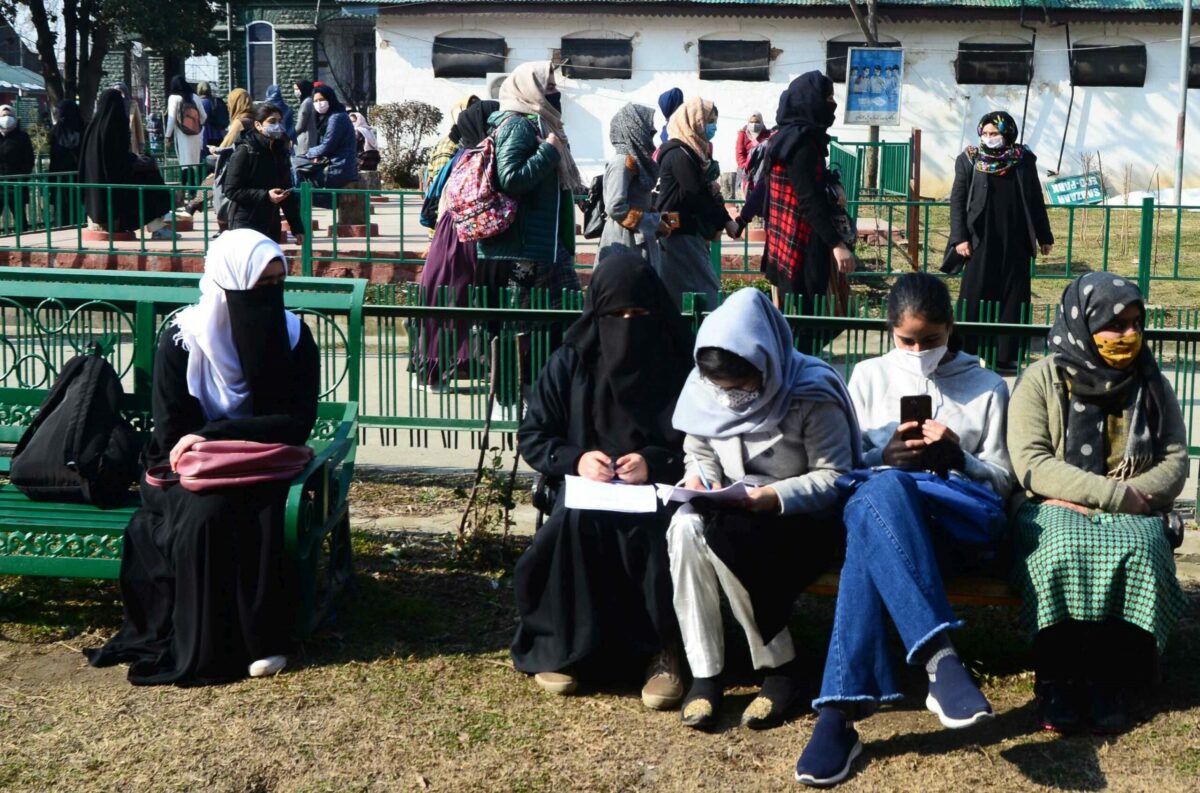Currently in vogue, the ambitious and modern NEP-2020 has a huge flip side too, reports Aiman Fayaz

In 2022, the government implemented a new education policy (NEP) in Jammu and Kashmir. The policy emphasises the elimination of rigid boundaries between humanities, sciences, and other subjects. It aims to nurture important skills while instilling empirical thinking in the new generation.
However, educators and students still have issues with their readiness and the infrastructure.
Multiple Entry and Exit Points
It is argued that even top-tier colleges lack the necessary intellectual resources to provide guidance to undergraduate students. Implementing the education policy without adequate preparation may have serious negative implications for students and the overall quality of education.
“Jammu and Kashmir was completely unprepared for the implementation of the new education policy,” Izzat Shafi, Assistant Professor at Women’s College Srinagar, said. “There should have been awareness programmes in colleges so that everyone could have been ready for it.”
The National Education Policy 2020 proposes a flexible curriculum with multiple entry and exit points. This aims to replace the current rigid structure, providing students with opportunities to choose subjects that align with their preferences and requirements.
Admitting that many educationists view the introduction of the entry-exit option in subjects as a significant reform, Izzat said it is aimed at providing mobility to learners. If a student chooses to exit after one year, they will receive a diploma without losing their academic year. This is expected to address the issue of high dropout rates in India and increase the gross enrollment ratio.
Under the NEP-2020, students who wish to obtain a graduate degree will need to study for four years, while those interested in a diploma can complete the programme in two years. However, this change may result in some students discontinuing their studies mid-way.
“There are also negative aspects to consider with the entry-exit options. For instance, if a learner decides to exit after one year, what will be their future? Is our economy and industrial sector prepared to accommodate one-year diploma students? Will they possess the necessary academic or skill-based qualifications to be integrated? These questions remain significant concerns.”
= The NEP emphasises the incorporation of a multidisciplinary educational approach into the curriculum from an early age. Exposing students to diverse disciplines aims to enhance their understanding of their chosen fields.
“The fragmentation of major and minor subjects in the new education policy was a masterstroke,” Dr Salman Mir, an academic counsellor at Amar Singh College, said. “It provides flexibility, allowing students to explore beyond their specific streams. This move towards holistic child development is commendable.”
Fragmented Subjects
The objective of multi-disciplinary learning is to cultivate students with knowledge in multiple fields. However, education is a complex realm that encompasses various styles, values, and philosophies. With a wide range of subjects to learn, becoming an expert in a particular field becomes arduous.
“However,” Dr Salman said, “the fragmentation of subjects into major and minor has created confusion among students. There has been a lack of orientation for students regarding how to choose subjects. The process has been left to the teachers, who assign subjects without any examinations, which has resulted in chaos.”
The NEP has granted students the freedom to choose their subjects in colleges and universities. However, in Jammu and Kashmir, students appear to be facing confusion regarding major, minor, and multi-disciplinary subjects assigned by colleges.
“I think the NEP has made my academic life more stressful,” Zunaira, a student at Women’s College Srinagar, said. “A student may be interested in two or three subjects, but is forced to take seven. This should have been tested before implementation, and a gradual introduction could have helped students become more comfortable. Instead, the policy was thrust upon us without consideration.”
Vocational Integration
The policy emphasises the integration of vocational subjects such as crafts and entrepreneurial skills into the curriculum. This change aims to equip students with a diverse set of skills, preparing them to meet the demands of industries and embrace a modern approach to education.
“The idea of merging the education system with industrial prosperity is a wonderful step ,” acknowledges Dr Salman. “However, one concern we have is whether we can provide students with the necessary skills so that after completing a one-year diploma or a four-year honours course, they will be prepared for industrial prospects. Additionally, is our industrial structure designed in a way that students can seamlessly fit into it after completing their education? It is not only the education sector that requires attention; there needs to be coherence between these two fields for us to expect success.”

The NEP 2020 highlights the issue that teachers, especially at higher educational levels, are not equipped to teach vocational courses. Alongside mainstream education, students are taught the theoretical aspects of vocational training, which has proven to be ineffective and adds a burden to students’ workload.
“If we are merging education with industrial prosperity,” asserts Dr Salman, “then the government must work on both aspects simultaneously. We need to consider input from experts in the industrial sectors to determine the skills that should be imparted to students so that they can transition into industries after completing their degrees.”
“We are supposed to get vocational training from skilled professionals,” Sammah, a student at Degree College Bemina, said. “They could have renovated the old infrastructure in colleges and provided them with proper equipment. Unfortunately, this was overlooked when framing the policy. Proper implementation has been hindered by the lack of necessary resources in institutes.”


